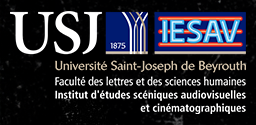Regards
Keywords
Cultural acclimatization, political dimension, literary myth, enemy brothers, providential savior
Document Type
Article
Abstract
After exploring the diversity of the elements borrowed from The Count of Monte Cristo by the two adaptations of Henri Barakat – Amir al-intiqam and Amir al-dahaa – this article analyzes the way they work towards their own coherence through a cultural acclimatization on different levels and by the grafting of a subplot with political implications in line with the social context of 1950s and 1960s Egypt.
Far from accomplishing only his own revenge, the hero is led, in the wake of a political prisoner, to join the sphere of rebellion against the representative of tyranny and to prepare for the rise to power of the just.
Résumé
Après avoir exploré la diversité des éléments empruntés au Comte de Monte-Cristo par deux adaptations égyptiennes dues à Henri Barakat – Le prince de la vengeance et Le prince de la ruse – cet article analyse la façon dont elles travaillent à leur propre cohérence par une acclimatation culturelle se déployant à différents niveaux et par la greffe d’une sous-intrigue aux implications politiques, bien ancrées dans le contexte de l’Égypte des années 1950-1960.
Loin d’accomplir uniquement sa propre vengeance, le héros est amené en effet, dans le sillage d’un prisonnier politique mis au secret, à rejoindre la sphère de la rébellion contre un ordre policier tyrannique et à préparer l’accession au pouvoir des justes.
Recommended Citation
Sabry, Randa
(2021)
"Symbolique et oblicité politique dans deux adaptations égyptiennes du Comte de Monte-Crist,"
Regards: Vol. 25:
No.
25, Article 3.
Available at:
https://e-journals.usj.edu.lb/regards/vol25/iss25/3
Included in
Comparative Literature Commons, Creative Writing Commons, Film and Media Studies Commons, Fine Arts Commons, Theatre and Performance Studies Commons


